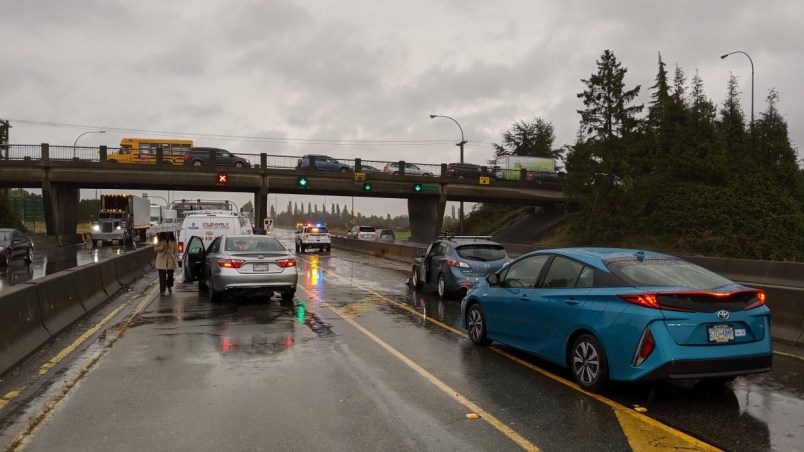The Richmond Chamber of Commerce wants more lanes from Richmond to Delta, and preferably a bridge, not an eight-lane immersed tube, to replace the George Massey Tunnel.
Matt Pitcairn, president and CEO of the chamber, released this position on Thursday, following Richmond council’s Tuesday evening endorsement of the tunnel plan and their decision to ask the four Richmond MLAs to get on board endorsing this option.
Earlier this month, the Metro Vancouver mayors’ task force on the George Massey crossing voted in favour of the immersed tube tunnel.
Pitcairn argued the proposed eight-lane tunnel won’t give any relief to commuters during rush hour, that it will add costs and delays to the project and it will have an impact on the river and surrounding lands. In addition, the tunnel disregards the concerns of the First Nations.
The proposal is to have eight lanes, but one lane in each direction would be dedicated for transit.
The chamber argued, since there will only be three lanes in each direction for commuters, this won’t be any better than the situation today whereby there are already three lanes in the rush-hour direction.
Coun. Alexa Loo argued the same point at Tuesday’s council meeting.
“There’s already three lanes at the peak times going in the peak directions – if you’re only adding a transit lane, you’re not making a dent in what’s happening there, it’s already miserable,” she said.
Loo said she didn’t endorse the eight-lane tunnel proposal because “I don’t think it’s big enough.”
She also pointed out the 10-lane bridge, a BC Liberal plan scrapped by the NDP two years ago, would have been built by 2023, the time when construction is slated to start on the new tunnel.
At Tuesday’s meeting, Coun. Harold Steves outlined the history of the crossing replacement, pointing out former transportation minister Kevin Falcon had a plan in place to twin the tunnel in 2006, but that was scrapped later by then-premier Christy Clark in lieu of the 10-lane bridge.
Richmond council was consistently opposed to the 10-lane bridge option, arguing it would have encroached on farmland and greenspace in Richmond and required a massive clover-leaf style interchange at Steveston Highway.
In preparation for the 10-lane bridge, $66 million had already been spent on planning, Pitcairn stated, and the current proposed project could take three years for planning and the environmental assessment.
In addition, the tunnel would have “more adverse” risks than a bridge, Pitcairn pointed out.
“Digging a 50-metre-wide excavation across the bottom of the Fraser River and on shore will have significantly more impact on the environment and marine life than bridge foundations built on the shore of the Fraser River,” she said.
But dredging is already taking place on the river, Steves pointed out, for example, the port dredges all year round and the Steveston Harbour Authority dredges periodically. In addition, the Department of Fisheries and Oceans knows when the fish fry and larger salmon are going up and down the river.
“The dredging will be no different for dredging a tunnel from what the Port of Vancouver does every day for most of the year,” Steves said.
The chamber echoed concerns from Tsawwassen First Nations Chief Ken Baird about the environmental risks that would come from the 50-metre-wide excavation of the river. Baird said that they are “fearful of the negative impacts the other options will have on the Fraser."
Richmond council received a presentation from the Ministry of Transportation and Infrastructure about the tunnel project on Tuesday afternoon.
Council passed a motion to both endorse the tunnel and to push for transit options on the Highway 99 corridor. They will also write to the premier to state their endorsement of the eight-lane immersed tube tunnel.
Loo voted to move forward with the public engagement on the tunnel proposal, but didn’t vote to write to senior levels of government.
Mayor Malcolm Brodie said, whatever is built, the strategy should be to get people out of their cars. He added he hoped eventually there would be rail, but, for now, there should be a “very aggressive bus plan.”
While the chamber prefers the former bridge plan, they stated that, if a tunnel is built, it should have more lanes than the proposed eight “to ensure that we are building a new piece of infrastructure which meets the needs of future generations, and is not at rush hour capacity on the day it opens.”
The tunnel replacement will come back to the Metro Vancouver board later for a vote, possibly in early November.



.jpg;w=120;h=80;mode=crop)